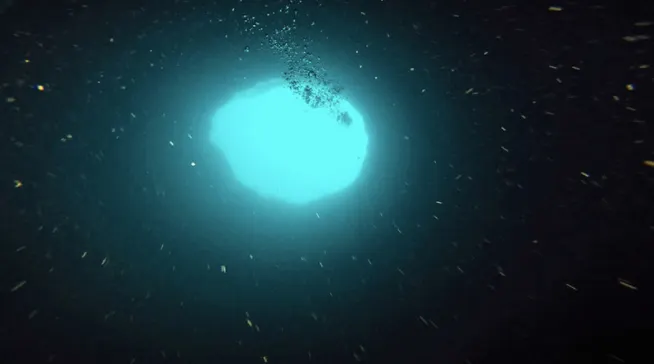
Mysterious blue hole hidden off Florida's coast will be explored
Blue holes are ecological hotspots and many of them have not yet been explored
Researchers from a number of scientific institutions have embarked on an expedition that will explore a mysterious blue hole that is hidden off the coast of Florida.
The destination seems both eerie and enchanting and NOAA says blue holes are actually underwater sinkholes that are similar to those found on land.
Blue holes open up the ocean floor and the site that the scientists will soon explore is known as the Green Banana, which is 47 metres (155 feet) below the ocean’s surface and 130 metres (425 feet) deep.
Researchers are fascinated by blue holes because their unique shapes and depths are ecological hotspots with high levels of biodiversity. They hold an abundance of uncommon plants and animals that are considerably different than those found in other parts of the ocean.
In 2019 the researchers from Mote Marine Laboratory, Florida Atlantic University/Harbor Branch, Georgia Institute of Technology and the U.S. Geological Society explored a blue hole dubbed Amberjack Hole that is located near Sarasota, Florida.
Sediment and water samples that were collected from Amberjack Hole revealed that nutrients are released from the bottom of the hole and create an ideal environment for certain organisms to grow. NOAA says that this could also partly explain why blue holes are full of many different marine species including sponges, corals, turtles and sharks.
The researchers also discovered naturally occurring isotopes in the water samples, which are typical markers of groundwater. Based on these isotopes, the experts say that there is the potential that blue holes could be connected to Florida’s groundwater or the groundwater somehow leads into the Gulf of Mexico.
The researchers found two smalltooth sawfish corpses in Amberjack Hole, which is an endangered species. Sawfish have been around for over 50 million years but are threatened by overfishing and habitat loss.
Green Banana will be explored in both August 2020 and May 2021 using the same techniques that were developed for the Amberjack Hole. The researchers note that Green Banana is shaped like an hourglass, which they say is a configuration that will create new challenges for deploying equipment.











